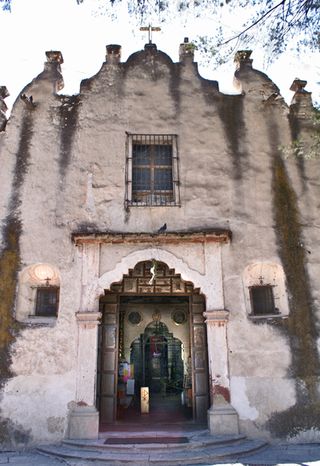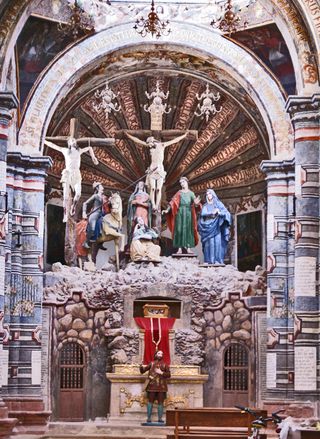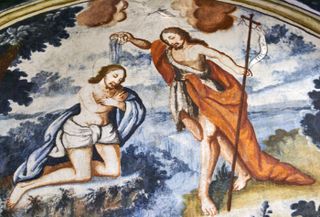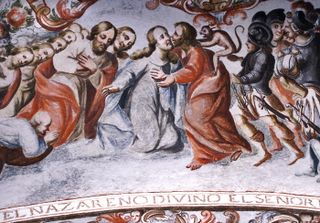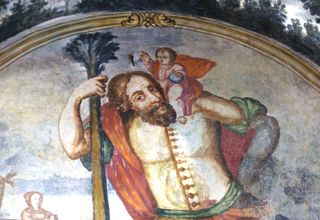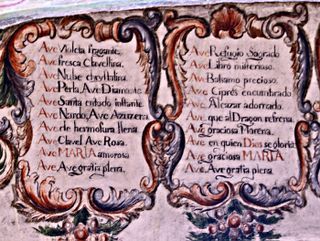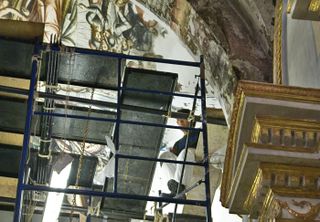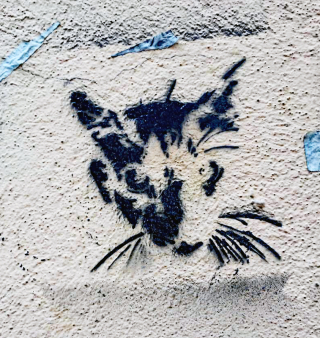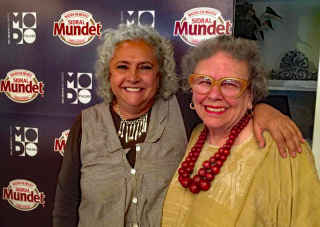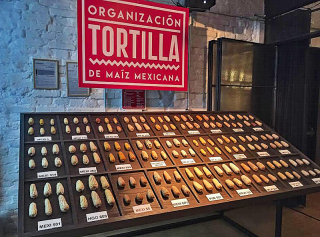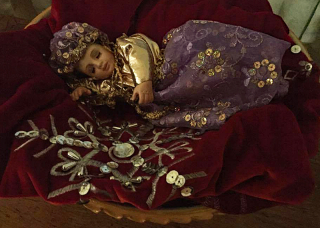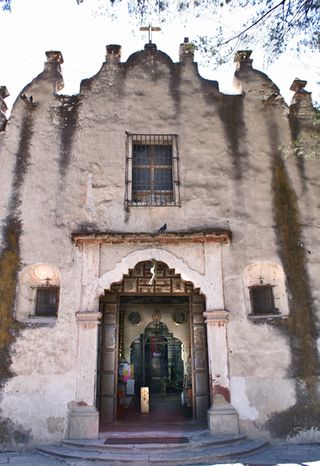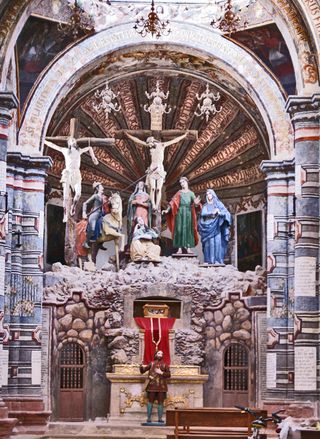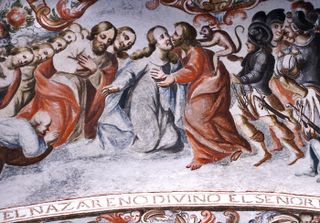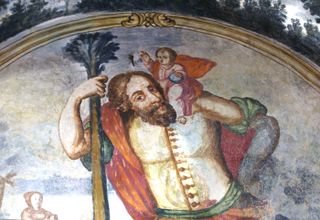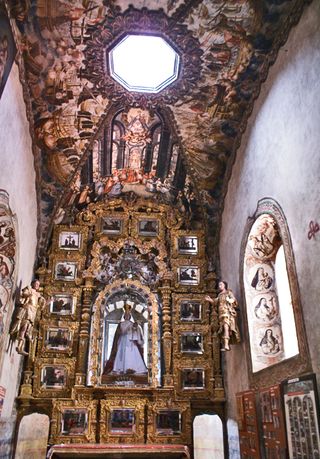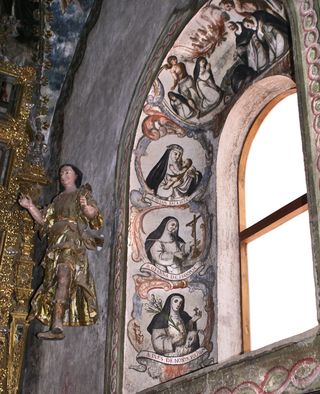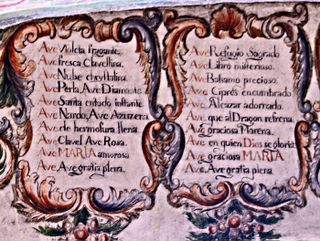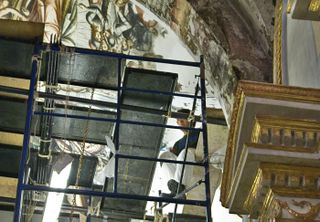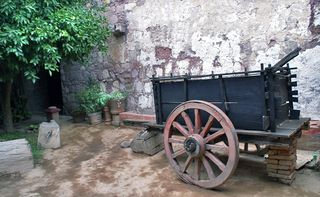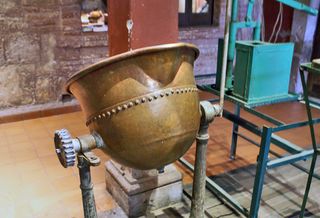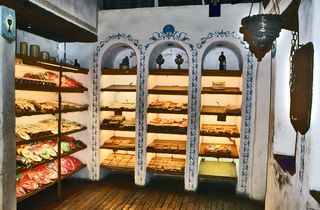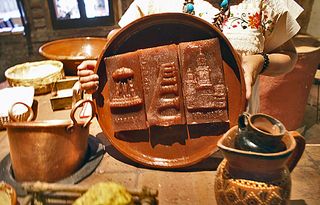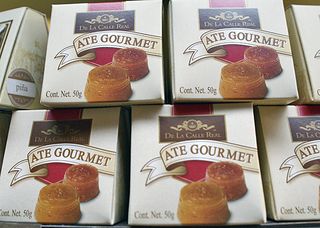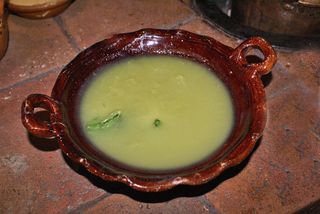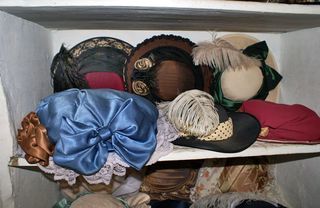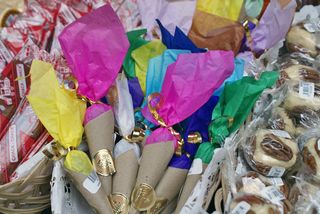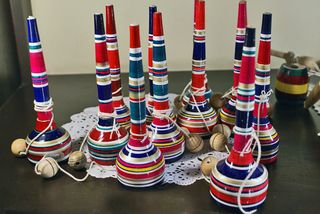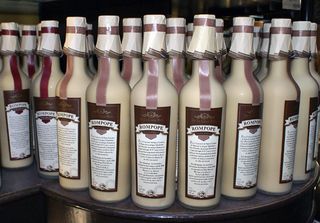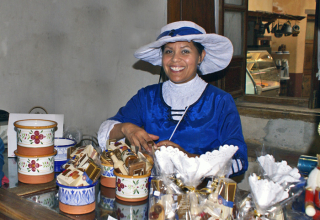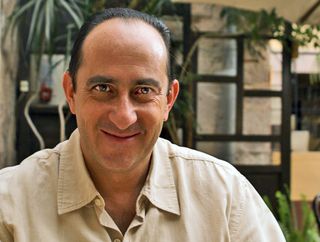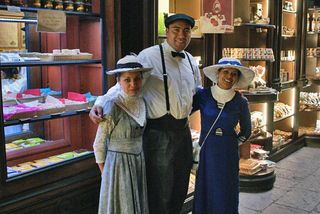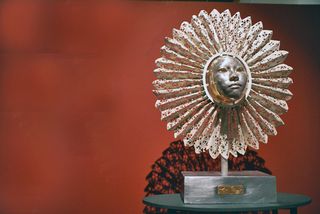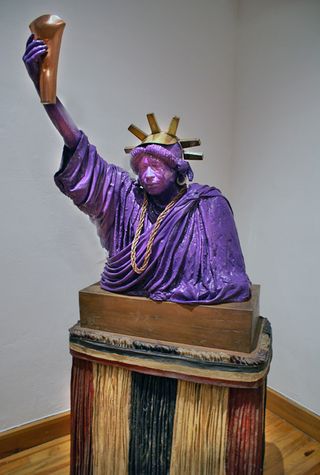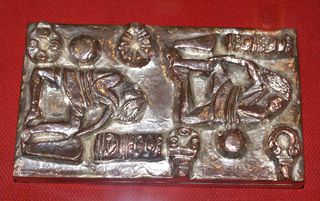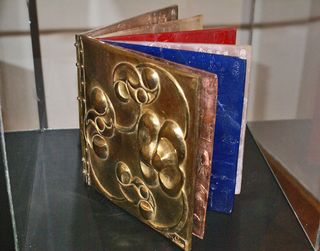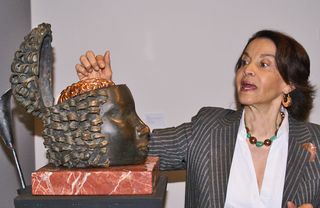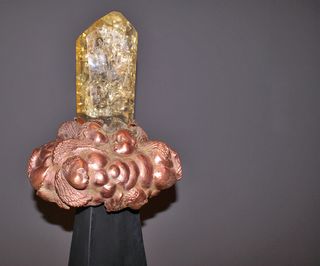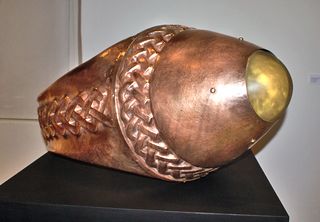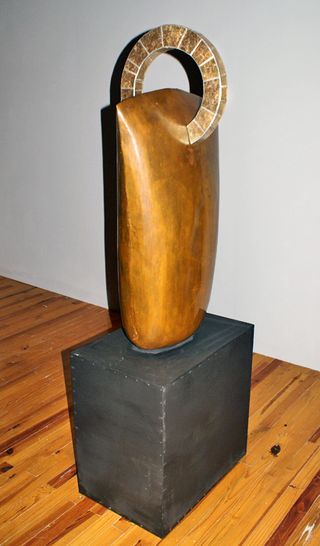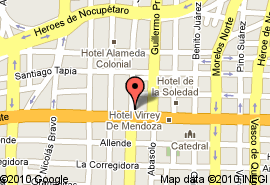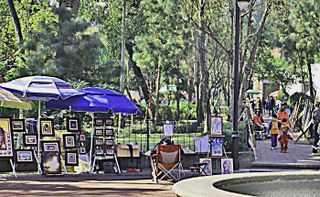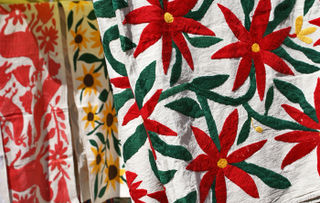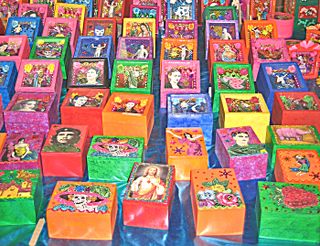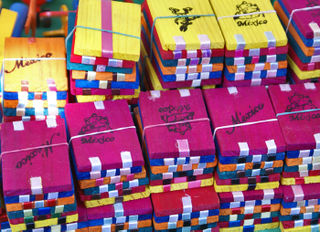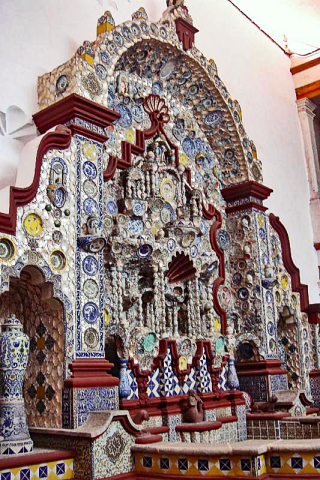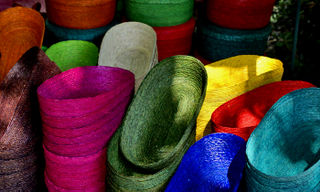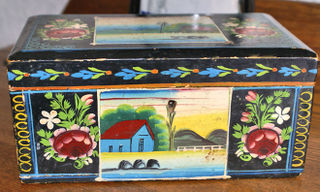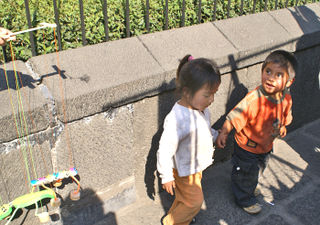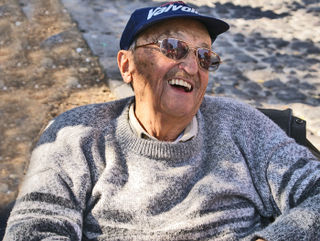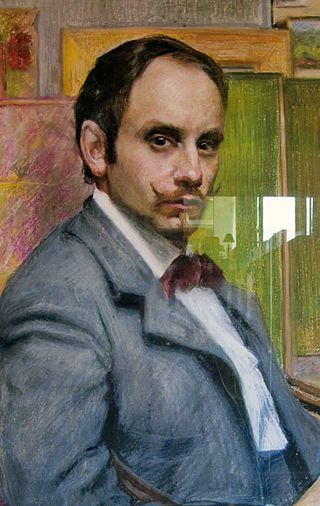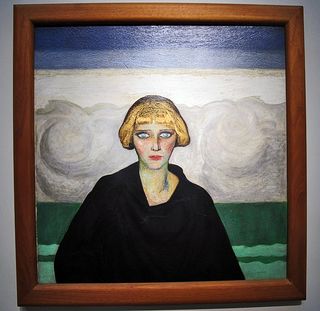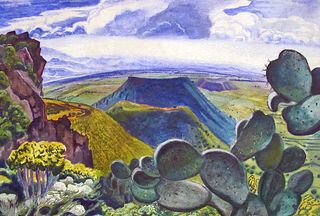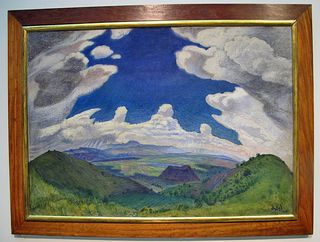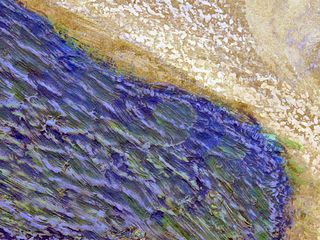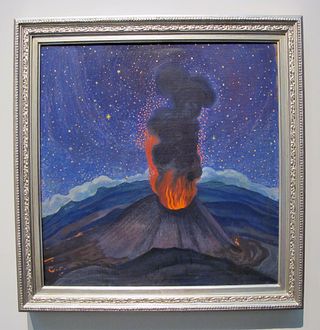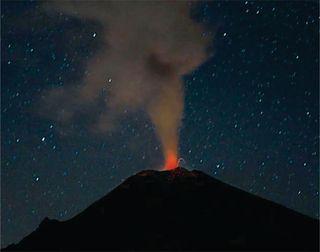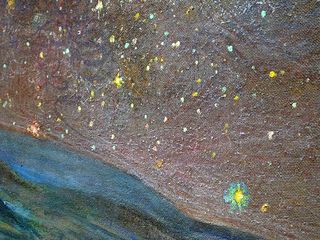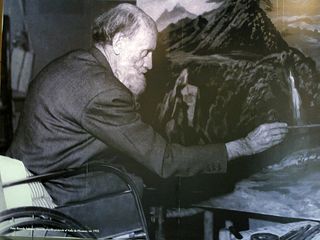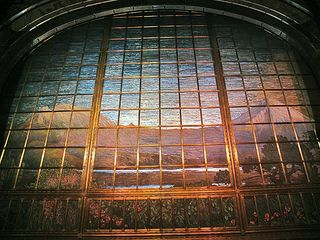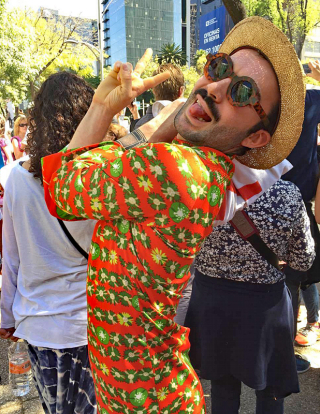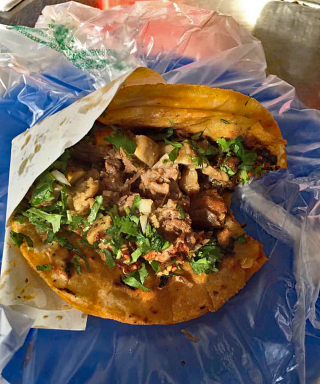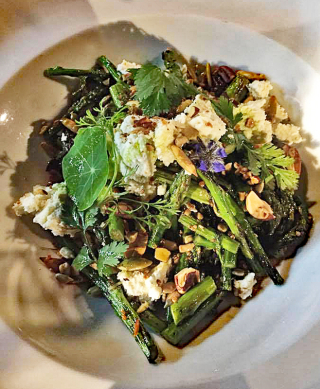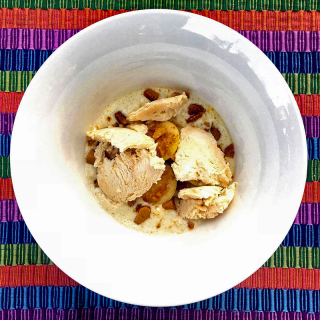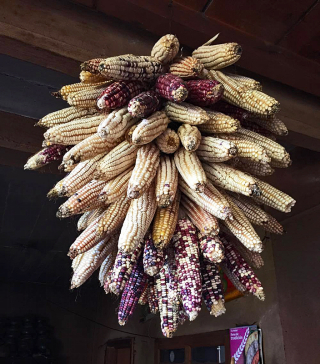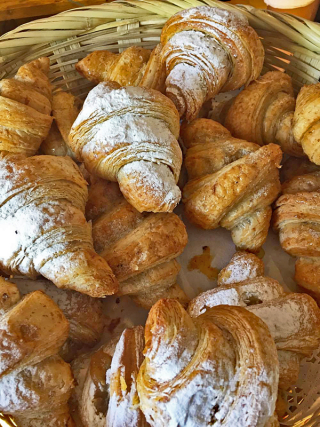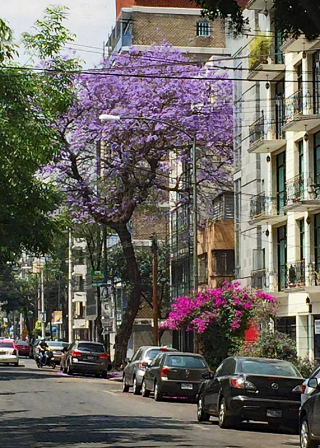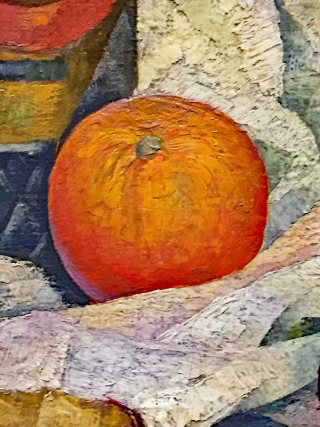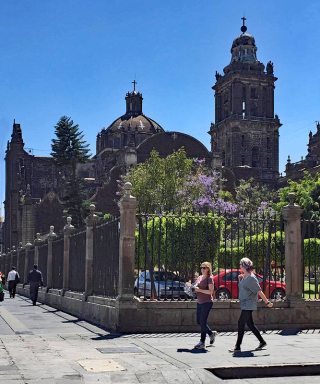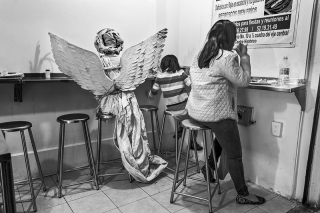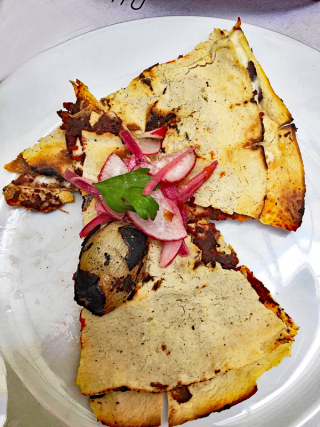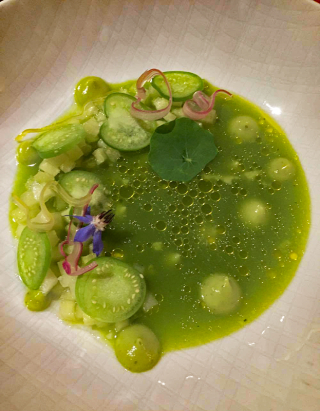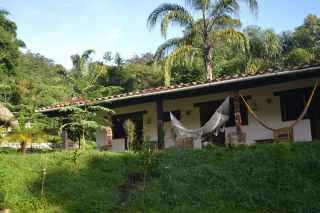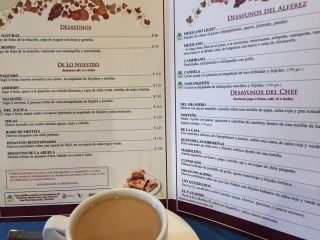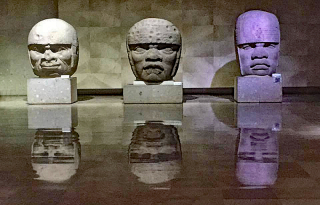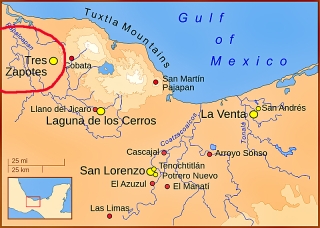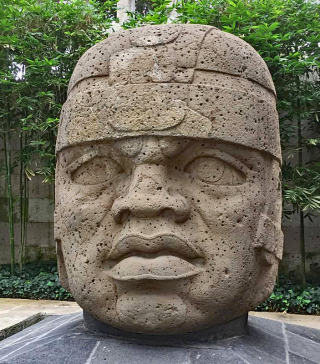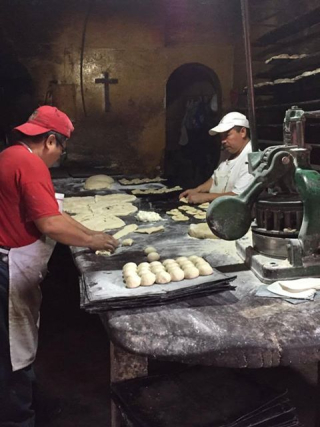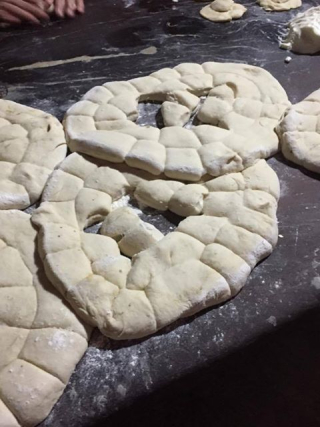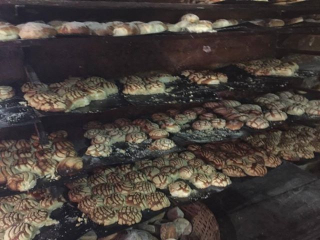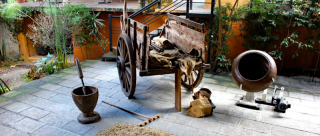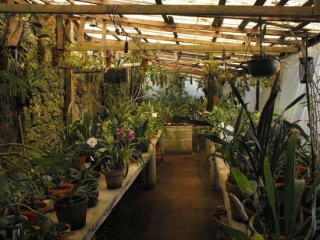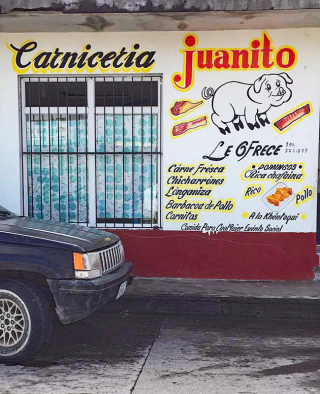
Beautiful Plaza Río de Janeiro, Colonia Roma Norte, Mexico City. The tall pink building on the right-hand side of the photo is (was, I suppose) the home of a friend. It was seriously damaged in the quake and all residents were evacuated. Photo courtesy Capt. Ricardo Gómez Garrido and Pinterest.
At 11:00AM on September 19, 2017, the 32nd anniversary of the 1985 Mexico City earthquake, the nation as a whole took a few moments to sound its earthquake alarms as a test run for city residents to practice precautions, and as a memorial to the many, many thousands of people who lost their lives in Mexico City that day so long ago. The earthquake alarm is arguably the most shocking sound in this city where I live. There are 8000 alarm speakers set up, one or more in every neighborhood; one of them is just on the corner, only one door from my apartment building. The horrible and unmistakeable sound–alerta sísmica alerta sísmica alerta sísmica, accompanied by unspeakable sirens–comes directly into my home office window. As 11:00AM approached, I steeled myself and warned the cats; the alarm went off as scheduled, stopped within a minute or so, and we all breathed a sigh of relief.
Two hours and fourteen minutes later, all hell broke loose. A massive earthquake, 7.1 on the Richter scale, shallow and with a nearby epicenter, crashed into Mexico City with no warning. Due to its proximity, there was no time to sound the alarm until the quake had already started. As is usually the case, the neighborhood where I live and the neighborhood nearest me were hardest hit. There are geological reasons for that, but no need to elaborate on those now. Parts of the whole city sustained serious damage; at last count, about 50 buildings collapsed, thousands more are in danger of collapsing, more than 400 people lost their lives, and thousands more are seriously injured.
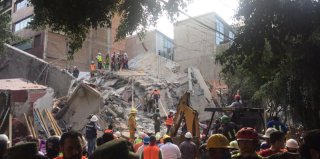
This building collapsed in my neighborhood. Photo courtesy El País.
On September 24, a young Mexico City woman whom I do not know used social media to express her thoughts, feelings, and experiences as she volunteered that day with an earthquake relief effort. I contacted her and asked her permission to translate her writing into English and publish it here. She calls herself "Al" and she asked that I not publish a photograph of her. She says she's not a writer, although in my opinion she most definitely is.
___________________________________________________________
"Yesterday I spent six hours helping at Ground Zero on Calle Escocia, in the Del Valle neighborhood of Mexico City. I had stayed overnight at my parents’ home, and got up at 6:30AM. My mother made breakfast for me while I was getting ready, and then I lined up to go to the place where volunteers were to gather.
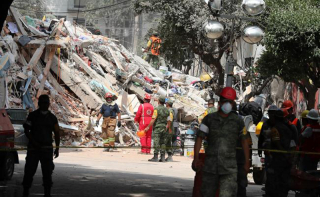
"Al" wrote about the wreckage and rescue efforts at this building. Photo courtesy El Universal.
Those in charge explained to us that we women were to pass empty buckets to the Mexican army, who were going to fill them with rubble and then pass them to two lines of men who were behind us, pressed up against the walls. The army was to move any metal, glass, furniture, and other more dangerous objects. They knew how inexperienced most of us volunteers were and they didn’t want us to run any risks.
In order for us to go in, they gave us equipment—helmet, gloves, vest, and face masks. They used permanent markers to write our name, a contact number, and blood type on our arms. They vaccinated us against tetanus.
And then we went into Ground Zero in silence, our cellular phones turned off. Right after a 45 minute delay due to the scare of the second earthquake [Saturday 23 September, a 6.2 aftershock from the earthquake on September 7, 2017], the army immediately put us to work. We had to wait while Civil Defense made sure that it was safe to go into the building.
My eyes could not believe what they were seeing: I had never seen a collapsed building, never thought how a structure so strong and solid could become a mountain of rubble and memories. The “line of life”, as we called it, began its work, and we put thinking aside in order to be able do our job.

The 'line of life'. Photo courtesy Daniel Águilar and El Universal.
While we were actively working, other volunteers continuously offered us donated water, electrolytes, candies, tamales, and hard-boiled eggs. We volunteers preferred not to eat; we just took candies and left the food for the army and the engineers. Doctors came through continuously, asking if we were feeling all right, putting drops in our eyes, and helping people out of the building if they looked over-tired.
Passing buckets, even the big paint-bucket size ones we had, seems simple, but after an hour I felt blisters on my hands and cramps in my shoulders. I knew I was not the only one tired when buckets began to drop from the hands of other volunteers. Some shouted, “Be careful! Those could break!” The men tried to make us feel better, saying we were doing great work.
Meanwhile, we tried to concentrate so as not to delay the work as we watched pieces of other people’s lives go by: shoes, photographs, chairs, clothing, blankets, pictures from their walls. Objects that they surely obtained from their own efforts and dedication, and now they are nothing. A wheelbarrow, thrown aside by the masonry workers who were removing bigger pieces of the wreckage, grabbed my attention
. In the wheelbarrow was a set of brand new drinking glasses, still in their wrapped box.
As the women at the head of the ‘line of life’ withdrew, those behind them advanced. I came closer to the head of the line, and suddenly I saw a car among the ruin of the building’s parking garage: a bright-red Nissan Sentra, undamaged. Nevertheless, the garage entrance is blocked, so the car will never get out unharmed.
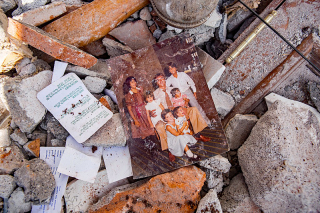
Memories among the wreckage. Photo courtesy La Jornada.
Nobody is taking selfies, nobody is playing music, no one talks, no one makes jokes or acts lazy. Respect is tangible. The entire area is filled with mourning. Yesterday, workers here rescued a pug dog and a cat, which tells us that there is still the possibility of life among the rubble. If we do our work efficiently, it could make the difference between life and death for someone else.
The Army, the Navy, and the engineers work tirelessly. We have a crane that operates with millimeter-sharp precision, moving walls as the driver is instructed so that the search for life can continue; when the crane is working, there is absolute silence. The Mexican flag waves on the tip of the crane as it maneuvers, and my heart expands. The military men stand shoulder to shoulder in front of us volunteers to protect us from the massive cement walls that the crane manipulates.
Once a wall is on the ground, the men take up their pickaxes and in minutes turn the wall into pieces. Our work starts again: pass the buckets as fast as possible to get the hunks of cement out fast, as fast as possible. The buckets come back with the men, the wheelbarrows come and go, the army takes the riskiest material away. My throat aches, my heart hurts even worse, my soul grows larger as I see the massive and selfless effort put forth to help others.
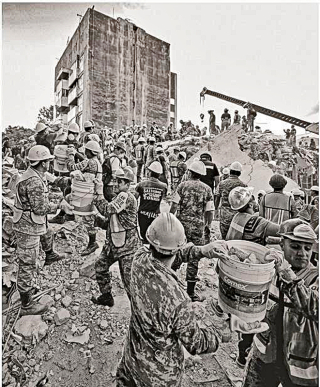
Photo courtesy Daniel Águilar and El Universal.
The rescue team from Chile arrives to help; they climb up to evaluate the ruins. Our activity continues hour after hour. I get used to my companions; I know that the one on the left is quick, but the one on the right is scatterbrained. I keep helping her so we don’t get behind. Because of her helmet and her face mask, it’s hard to tell how old she is, but many are much younger than I—the majority of the volunteers are younger.
After a while, one of the engineers asks what time we started work. 8:30AM. He says we need to leave, but my companion on the left and I say that we can keep working for a couple of hours longer. He says it’s almost three o’clock—I can scarcely believe it!—and that we need to stop now so that our exhaustion doesn’t cause an accident. They stop the ‘line of life’ and announce that a convoy will leave with fifteen women. We leave our buckets and head out toward Calle Escocia, in the direction of Calle Eugenia. While we are leaving, people drop what they have in their hands, take off their gloves, and start applauding us: the volunteers, the paramedics, the engineers, the masonry workers. Someone from the army shouts: “Long live our brave Mexican women!”
Among applause and cheering, with my eyes on the ground and holding back tears, I leave Ground Zero. Our group turns toward Calle Eugenia, I turn in my equipment, and people offer me fruit, food, and water as they congratulate me. With many thank yous, I continue on my way out. As I walk, I realize that I am alone: I don’t know where my companions are, but I would have liked to say goodbye to them.
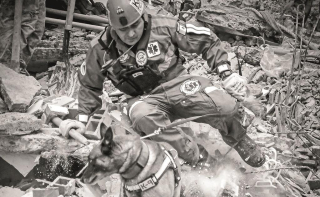
Rescue dogs have been critical to the relief effort. Photo courtesy Daniel Águilar and El Universal.
Everything hurts, I’m so hungry, my face is burning and I feel dizzy. A volunteer notices and she stops me and takes me to a control booth, where they give me a banana and a soft drink. I wait a few minutes and go out through the cordoned-off area, where the volunteers who will relieve us and the police applaud me again. I’ve never gotten so much attention, and I only smile. Fame is not my thing. I take a grateful breath, I comb my dust-stiffened hair, shake off my pants a little, and keep walking toward Calle Gabriel Mancera. I think about what I have lived through, proud of my work and above all, that I didn’t cry in front of the others. This ends when I see my mother waiting for me at the first checkpoint, among the dump trucks waiting to take away more rubble.
We are so fortunate to have all that we do. The least we can do is help those who are going through such difficult times. A friend took a picture of me as I arrived at her house, so that I would never forget what I learned and felt that day. And I won’t."
__________________________________________________________________
None of us will forget, Al. Thank you and God bless you.
